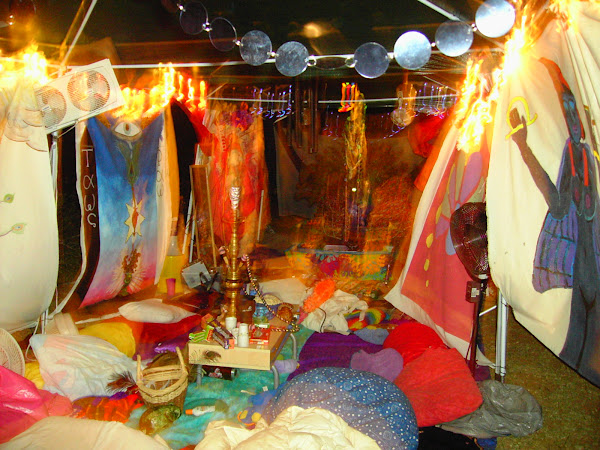Last Friday I was visiting with a friend who had just attended Movement: Detroit’s Electronic Music Festival and came back refreshed and effusive about everything she saw and heard. There was something genuinely touching about her enthusiasm, particularly the fact that she was sharing it with me, a longtime loather of rave music in all its micro-categories as well as a notorious cynic with regard to the utopian pretensions of the rave movement.
Rafael Behr unintentionally summed up the rave dilemma in his Guardian comment piece, Where are you, my fellow old ravers? “Imagine a formula for calculating the impact of a subversive youth culture. It would factor in the scale of moral panic, the effectiveness of subsequent hijacking by fashion and music industries and changes in values that were smuggled into the mainstream. Rave would come out as the biggest sell-out ever. Consumerism won hands down.” Indeed, such is the ubiquity of this music that for a few years it has been the staple of Guy Ritchie-style, pretentious action movie soundtracks. For a while it seemed like any kid with a computer was supposed to be a musician and any asshole with a record collection was supposed to be a DJ. It was dizzily wonderful until it became omnipresent and oppressive. Or, as Rafael sums it up,” Electronic dance music is part of Britain's audio furniture. It reverberates in bars and clubs, is the soundtrack to TV shows, adverts and radio jingles. And it always plays in gyms. It was there that I found myself pondering…the peculiar fact that this music was once illicit.”
Our nostalgic friend is specifically referring to Great Britain’s Criminal Justice and Public Order Act of 1994, which made it illegal to gather and listen to music comprised of repetitive beats. As a long-time freeform disc jockey, I was ever leery of the claims that raves were subversive, but such organized oppression certainly lent that illusion to embattled ravers. Also, it wasn’t really the music that was illicit as much as the widespread use of club drugs, particularly MDMA or “ecstasy.”
Like the ‘50s revival in the ‘70s and the ‘70s revival in the ‘90s, rave music is being recycled by the nostalgia machine. Thirty-something ravers, driven from dingy warehouses, open-air massives and “renegade” parties, are now flocking to dingy or glitzy bars to hear their favorite “illicit” music: oldies.
“But while the aesthetics of the 80s dance revolution colonised popular culture, the political consequence was tiny,” Rafael admits. So thoroughly did rave culture aggressively sell out that it is now the stuff of mainstream culture. Another friend, a keyboard player in a live House music band, told me that there was no such thing as selling out anymore. “That died with the ‘60s. I’m a professional musician. My goal is to sell out.”
It wasn’t more than a few years into the ‘90s that organized raves, by and large, closed ranks and abolished the short-lived tradition of “chill rooms,” where ambient and diverse downbeat music could once be heard. The tyranny of the beat prevailed, despite shrilly spurious claims to diversity. Dance party culture wasn’t really a culture or even a sub-culture. Purged of the incessant tennis-shoe-in-a-dryer beat, what is left? A faint echo of late ‘60s counter-culture garnished in a vaguely warm-fuzzy acronym: PLUR.
My friend who had just made her pilgrimage to Detroit seemed bittersweet about it all. She urged me to reconsider rave music festivals like Movement (which seems to be a most unfortunate choice of names) as being comparable to festivals like Burning Man or Flipside in Texas. And while I don’t doubt that she had some profound epiphany, it’s hard for me to compare rave conferences with DIY camping events that, in essence, do play host to a remarkable variety of music, art and culture. As a long-time observer of Bohemian movements, I can only hope that one day there will once again be viable counter-cultural movements that, even as they draw on inspiration from the past, present us with a startling freshness and purpose that is all too rare these days.
In retrospect, such outbreaks of social magic are inevitably ephemeral. We take for granted that the long festive nights will never end but eventually they do, only to return in another guise over time. It is only when they continue in lock-groove perpetuity that the law of diminishing returns takes over. And when that happens, we are forced to admit that another underground movement has passed or been positioned and merchandized. If we try to cling to it, instead of searching for new forms of expression and resistance, we find ourselves on the treadmill of nostalgia, lost in memory and identified as part of a marketing niche. It is in the unexpectedness of freeform expression that we may find new juxtapositions, gazing beyond the limits of mundane time and space so that all of history is celebrated along with the best speculative future we can conjure. Real diversity hasn’t had its day in court just yet.
Where have all the ravers gone? Where are all the “tribes” that once danced the weekend away in industrial no-go zones? Our forlorn pal Rafael answers these questions, but there is something of the epitaph in his response. “The repetitive beats are everywhere, but the rave generation is invisible. We pound out our hippy idealism on the treadmill.”
Tuesday, June 17, 2008
Subscribe to:
Post Comments (Atom)


No comments:
Post a Comment